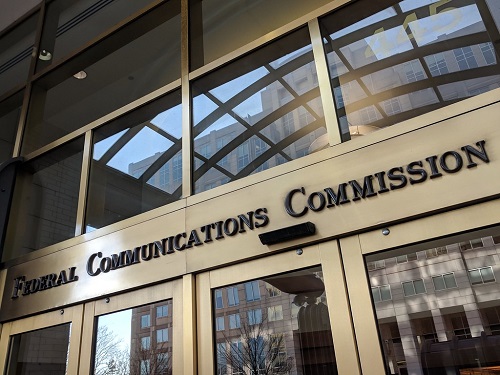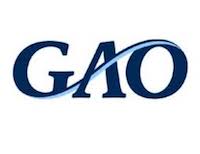
Fast, affordable Internet access for all.

As we approached the new year, and after more than a decade of criticism, the FCC finally moved to tackle the agency’s long-dated definition of broadband with an eye on nudging the industry toward faster broadband deployments. But many industry watchers say the belated reform inquiry arrives late and long after other agencies have filled the void left by a lack of FCC leadership.
The FCC’s Notice of Inquiry (NOI), issued in November, asks whether the agency should finally adopt 100 Mbps (megabit per second) downstream, 20 Mbps upstream as the new standard U.S. definition of broadband.
“Ultimately, I believe it is essential in the United States to set big goals in order to get big things done,” FCC boss Jessica Rosenworcel said in a statement. “That is why we are kicking off this inquiry to update our national broadband standard to better align it with the standards in pandemic-era legislation of 100 Megabits per second down and 20 Megabits per second up and also set a long-term goal for gigabit speeds.”
But there’s nothing about the FCC’s planned definition that’s “big.”
Of particular annoyance to long-time industry watchers is the agency’s continued adherence to an upstream standard that remains out of touch with modern needs. While Senators and consumer groups had pushed for a symmetrical definition of 100 Mbps, cable industry lobbyists managed to convince the FCC to lower the upstream bar dramatically.

Cable broadband speeds are notoriously topheavy, with downstream speeds far in excess of upstream speeds. While full duplex DOCSIS technology is supposed to eventually remedy that, the technology remains far from widespread deployment.
According to the Federal Communications Commission (FCC), at least 35 percent of tribal residents do not have access to fixed broadband. In comparison, only 7.7 percent of all U.S. residents lack access to fixed broadband, defined as minimum speeds of 25 Megabits per second (Mbps) download and 3 Mbps upload.
However, a recent report from the Government Accountability Office (GAO) concludes that this disparity is probably even starker.
The report, prepared at the request of the U.S. Senate Committee on Indian Affairs, finds that the FCC’s broadband data is inadequate and inaccurate. As a result, the data overstate sbroadband availability nationwide, particularly in tribal areas. Additionally, the report notes that the FCC fails to engage tribes in the data collection process.
Bad data isn’t just a bureaucratic recordkeeping problem. Tribal communities can miss out on federal funding to improve connectivity in unserved and underserved areas if the FCC data shows that they already have access to broadband.
Reporting Methodology Overstates Access
For the most part, the FCC gets its information on fixed broadband availability through Form 477. Internet service providers (ISPs) submit the form twice a year, listing the census blocks they serve and the highest speeds they advertise.
This data collection methodology inherently exaggerates Internet access. Since ISPs report coverage by census block, an entire block is considered served even if the provider offers, or could offer, access to only one home.
 Many tribal lands are located in rural areas, the report notes, where large census blocks result in vast overstatements of broadband availability. Census blocks can also contain both tribal and non-tribal lands, further obscuring the extent to which tribal communities lack connectivity.
Many tribal lands are located in rural areas, the report notes, where large census blocks result in vast overstatements of broadband availability. Census blocks can also contain both tribal and non-tribal lands, further obscuring the extent to which tribal communities lack connectivity.
As of now, 41% of tribal lands do not have high-speed Internet access according to the FCC Broadband Report of 2016 released on January 29, 2016. That same day, the Government Accountability Office (GAO) published a study of high-speed Internet access on tribal lands.
The GAO report (GAO-16-222) reviewed previous federal programs that aimed to improve Internet access and interviewed several tribal entities. The result reveals the perspective of communities impacted by the data and cooperation - or lack of both - among the different federal entities. Long before this report, the FCC had recognized the shortcomings of these programs and began to improve data collection and inter-governmental cooperation.
Highlighted Areas for Improvement
The GAO focused mainly on FCC and USDA programs from 2010 – 2014, especially those that specifically addressed tribal connectivity. GAO researchers collected the perspectives of several tribal entities, which provided useful qualitative data to understand the impact of Internet access on these communities.
Tribal officials noted that the important role the FCC and USDA programs had in expanding high-speed Internet access. Throughout the report are anecdotes of how the several programs have benefitted tribal lands. The outreach efforts of the two federal agencies, however, are not always well coordinated:
“Officials from one tribe said that multiple federal programs offering similar grants were confusing and that a federal one-stop-shop for outreach and training would help them better target the right programs for their situation.“ (p. 22)
The report also touched on the quality of quantitative data. In 2006, there was little meaningful data. Although the situation has improved, reliable data is still lacking. Tribal lands are often rural and sparsely populated, such that census blocks (the basis of much data collection) cover large areas. This method can grossly overstate the availability of Internet access in such an environment.
GAO Recommendations and FCC Action
The Open Technology Institute (OTI) at the New America Foundation recently released its report on bandwidth caps. "Artificial Scarcity: How Data Caps Harm Consumers and Innovation" is the latest warning about an issue with grave implications. The PDF is now available to download.
Last November, the Government Accounting Office (GAO) released a report [PDF] with serious comments on how ISPs might abuse their power through bandwidth caps. In that report, the GAO strongly suggested the FCC take action.
This report by Danielle Kehl and Patrick Lucey further examines how this profit grabbing technique from the big ISPs impacts consumer decisions and usage.
From the OTI press release:
In this paper, we examine the growth and impact of usage-based pricing and data caps on wired and mobile broadband services in the United States. We analyze the financial incentive that Internet service providers (ISPs) have to implement these usage limits and discuss research that demonstrates how these policies affect consumer behavior. In particular, we explain how data caps can make it harder for consumers to make informed choices; decrease the adoption and use of existing and new online services; and undermine online security.
It is also increasingly clear that data caps have a disproportionate impact on low-income and minority populations as well as groups like telecommuters and students. In the conclusion, we urge the Federal Communications Commission (FCC), particularly as the new Open Internet Order goes into effect, to open up a serious inquiry into whether data caps are an acceptable business practice.
In addition to their own data and conclusions, Kehl and Lucey provide information to many other resources that tackle the implications of bandwidth caps. As consumers' need for bandwidth increases with their changing Internet habits, this topic will only become more pressing.
Last month, the U.S. Government Accountability Office (GAO) released a report warning of the possibility and potential consequences of ISPs instituting data caps in their fixed line plans. In effect, this could mean applying something like the tiered service charges based on usage levels that we see in the mobile sector to broadband connections in the home or office. But whereas the vast majority of Americans have a reasonable range of choice between several major and minor carriers for mobile service, the GAO notes that the same is not true in the market for broadband, which could lead to ISPs using data caps (or usage-based pricing (UBP) in their parlance) in various harmful ways:
...providers facing limited competition could use UBP [usage-based pricing] to increase profits, potentially resulting in negative effects, including increased prices, reductions in content accessed, and increased threats to network security.
The GAO has provided the FCC with a copy of its report, and urged that the agency take action on the issue, including systematically tracking information on how many consumers are impacted by fixed providers instituting data caps and developing a voluntary code of conduct for the industry. According to Ars Technica, the FCC has taken a skeptical stance on the issue, despite Chairman Tom Wheeler’s outspoken concerns on the lack of competition in the fixed broadband market. Pointing to the small number of consumer complaints on the issue so far, the FCC asserted that “it is unclear that any action is needed at this time.”
Usage caps do not just affect sophisticated users with bandwidth-intensive jobs or hobbies that require them to transfer large design files or generate and share multimedia content. This has the potential to affect kids and adults doing homework or taking classes online, people who hope to cut the cord from traditional television providers, and telecommuters. From the GAO study:
The Government Accountability Office released a report today examining economic development and government-spurred broadband deployment. The report, titled Telecommunications: Federal Broadband Deployment Programs and Small Business looks at the effects of stimulus projects on opportunities for small business.
According to the press release:
“GAO’s investigation confirms the success of the Recovery Act’s broadband programs," said Rep. Waxman. “In rural and urban areas across the country, small businesses are benefitting from higher speeds and lower prices thanks to federal investment in this essential infrastructure. Expanding broadband access and quality is critical for American competiveness in the 21st century global economy. These were public dollars well spent.”
The report reviews communities around the country where either federal dollars have been invested in networks or local governments have made such investments. The results were consistent with our findings over the years - municipal networks create a business-friendly environment and contribute to economic development.
According to the report summary:
According to small businesses GAO met with, the speed and reliability of their broadband service improved after they began using federally funded or municipal networks.
Regarding competition, the GAO find that municipal networks spur competitor investments:
For example, following the construction of a fiber-to-the-home municipal network in Monticello, Minnesota, the two other broadband providers in the area made investments in their infrastructure to improve their broadband speeds. One of these providers stated that all of its networks undergo periodic upgrades to improve service, but upgrade schedules can change in order to stay competitive when there is a new service provider in a particular market.